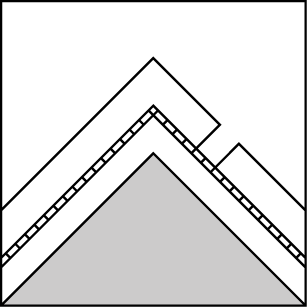Basic Information
Observation Details
Observation Date:
April 4, 2023Submitted:
April 4, 2023Observer:
SAC - Preuss, GensweinZone or Region:
Galena Summit and Eastern MtnsLocation:
Mushroom Ridge (SW-SE-E;7600-9500')Signs of Unstable Snow
Recent Avalanches?
None ObservedCracking?
None ExperiencedCollapsing?
IsolatedBottom Line
We experienced some sizeable collapses at the beginning of our ski descent. After stopping to dig a snow pit, we observed poor results. These signs of instability drove our decision to ski down a more conservative slope.
Advanced Information
Weather Summary
Cloud Cover:
ObscuredWind:
Light , NNew/Recent Snowfall:
HN: 12 cmSnow showers occurred through most of the day (S2-3 rates). A thin film of clouds allowed some sun through the clouds, but it wasn't enough to melt any snow surfaces. No drifting snow, but there is lots of snow available for transport.
Avalanche Observations
No avalanches observed.
Snowpack Observations
We dug on a sheltered east facing slope at 8700', where the snowpack was 225cm deep. The layer of concern was down 50cm on a thin layer of facets above a 2 cm thick melt-freeze crust (3/19). Two Extended Columns propagated with 26 hits. The Feb. facets (2/18) are down 134 cm.
A south facing slope at 9000' produced no propagating results (ECTN20 x2) on a layer of facets above a double melt-freeze layer down 45 cm (3/19). We had one outlier result propagate on the Feb. weak layer down 95 cm over a complex stack of melt-freeze crusts within 20 cm.
We started to descend our ski run and heard multiple collapses. We stopped to dig on the SW slope at 9300'. It appears the sun hasn't been consistent over the last week. Some sunny slopes had thin crusts in the upper foot of the snowpack, while other slopes lacked any crusts. A thicker slab of 65 cm sat on top of the double crust layer (3/19), producing ECTP23, 26.

Avalanche Problems
| Problem | Location | Distribution | Sensitivity | Size | Comments |
|---|---|---|---|---|---|
 Persistent Slab
Persistent Slab
|
|
Layer Depth/Date: 45-65 cm Comments: Sensitivity feels like it is between reactive and stubborn. Shading reflects observed terrain. |
Terrain Use
We had plans to ski a SW slope for the descent that had small sections of steepness up to about 34 degrees. After hearing sizeable collapses and poor snow pit results, we decided to go back down the skin track.
